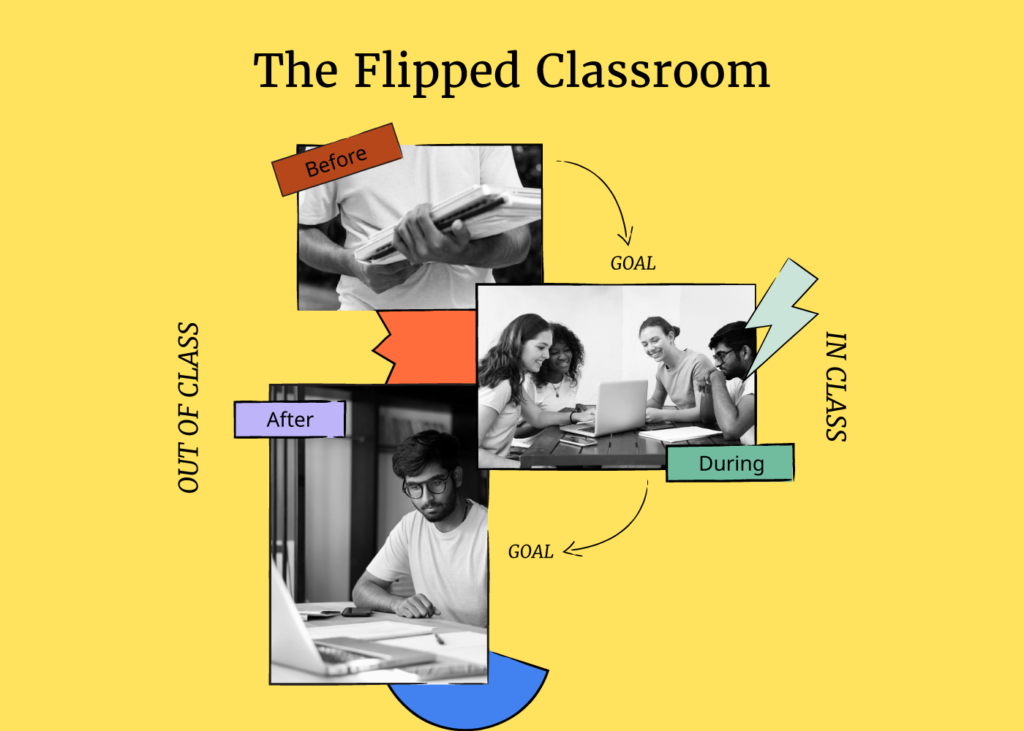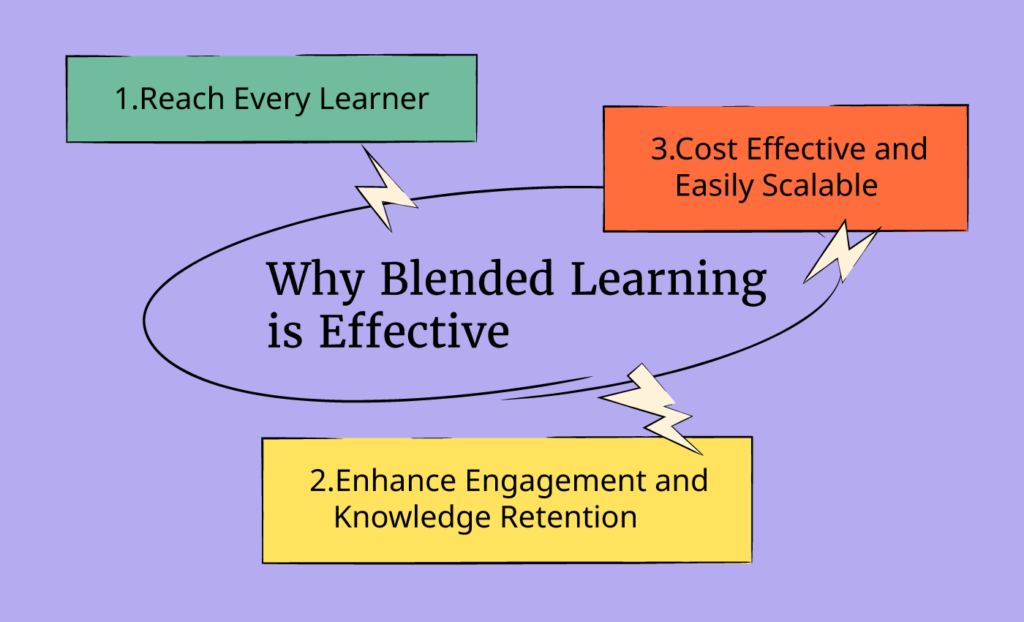Some of us learn best in the quiet of our homes, working at our own pace. Others enjoy the stimulation of a group environment, benefitting from the energy of face-to-face conversations.
Blended learning programs serve both groups equally, providing a number of different learning paths that cater to a variety of learning styles.
In this article, I’ll share how blended learning works, along with some key benefits of blended learning to help you decide if this model is the right fit for your team.
We’ll cover:
- What is blended learning?
- How does blended learning work?
- What is the difference between hybrid and blended learning?
- Why blended learning is effective.
What is Blended Learning?
Blended learning is a method of delivering educational content with both in-class and online components. It’s a flexible way to provide learners with the opportunity to engage with course materials at their own pace, while also providing in-class support with face-to-face, instructor-led modules.
Class time is an excellent venue for role-playing, brainstorming, and small group, collaborative team exercises.
Online training allows learners to access learning resources outside a traditional classroom setting, and may include learning tools like videos, games, tutorials, quizzes, and social media group chats.
Generally speaking, online coursework would be available via the learner’s home page in the learning management system (LMS).
In its purest sense, blended learning is a combination of in-person and e-learning resources. But some models will replace the face-to-face classroom component with a virtual classroom in which the learners remain connected to instructors via live webinars, video conferencing, and email or chat.
How Does Blended Learning Work?
Blended learning allows curriculum creators to tailor the learning experience to a variety of factors. Maybe you’re working with:
- Time restrictions
- A geographically dispersed team
- A mix of tech-savvy learners and more traditional learners.
Blended learning programs can be delivered in an endless variety of configurations to suit your team’s needs.
Example: You might decide to have two longer face-to-face sessions, complemented by online, asynchronous materials like games, quizzes, and homework assignments.
Maybe you ask your learners to complete specific modules online before returning for their next in-person session. Once face-to-face, you can discuss everyone’s progress and provide feedback. This is sometimes referred to as the flipped classroom.

What is the Difference Between Hybrid Learning and Blended Learning?
Hybrid learning and blended learning share several overlaps. Both are flexible learning methods that contain online resources. However, in a blended learning model, learners might attend a few in-class sessions and complete online exercises asynchronously in between.
In a hybrid model, in-class sessions are attended by face-to-face learners in the classroom as well as online learners who are synchronously watching a webcast of the same session.
Why Blended Learning is Effective

There are several reasons why implementing a blended learning model might be right for your team. Let’s take a look at a few of the most common:
1. Reach Every Learner
Everyone learns differently. For some people, face-to-face instruction, group work and in-person sessions are highly effective. For others, self-paced work accessed on their own time is the best way to reduce stress and retain knowledge.
Workforces consisting of a wide range of age demographics will often find that some groups are considerably more comfortable with technology, while others prefer in-person communication.
Blended learning empowers you to reach every kind of learner where they’re at, providing options so that everyone can perform at their personal best.
2. Enhance Engagement and Knowledge Retention
Blended learning improves student engagement because it keeps things interesting, offering both the human element of in-person instruction and options for fun things like gamification online.
Further, countless studies have shown that learners benefit from engaging in a variety of practices when picking up a new skill. Scientists call this interleaving, as opposed to the traditional learning method called blocking (in which learners focus on one skill at a time).
Statistically speaking, interleavers outperform blockers, both immediately and over the long-term. Blended learning presents the perfect opportunity for interleaving, since learners are given a wide range of in-class and online activities to complete.
3. Cost Effective and Easily Scalable
Though the up-front costs of investing in an LMS can seem daunting, blended learning represents a dramatic cost-savings in the long run. In-person sessions can easily become costly when geographically dispersed team members must be flown in to participate. The costs of paying instructors and speakers add up quickly too.
Blended learning allows you to cut down on in-person sessions by providing complementary online materials. Blended learning programs are also easy to scale. Online resources can be made once and reused countless times. Teams at a variety of locations can use the same online resources, while supplementing with local class sessions.
How Learning Management Systems Can Help
The blended learning environment serves a variety of learning styles, can help you cut costs, and is easily scalable as your organization grows.
Implementing a blended learning model requires some up-front planning, and a lot of back-end technical support. That’s where a learning management system (LMS) can help.
An LMS is a software application that houses, tracks, and delivers your training content. Your LMS will assess learning goals at both the individual and organizational level, monitor progress as you move towards meeting those goals, and collect and present material for supervising the process.
Learners can access their online materials from within the LMS, and trainers can receive real-time data on how the curriculum is being received.
If you’d like to improve the efficacy and efficiency of how your organization delivers blended learning materials, check out our favorite tools:
To learn more about blended learning, professional development, and providing learning resources:
- How To Create A Learning And Development Strategy In 7 Steps
- How To Start An Effective Mentoring Program In 6 Steps
- How To Create A Culture Of Learning (with Noah Rabinowitz from Moderna University)
Need expert help selecting the right Learning Management System (LMS) Software?
If you’re struggling to choose the right software, let us help you. Just share your needs in the form below and you’ll get free access to our dedicated software advisors who match and connect you with the best vendors for your needs.





